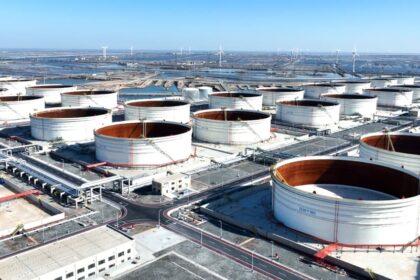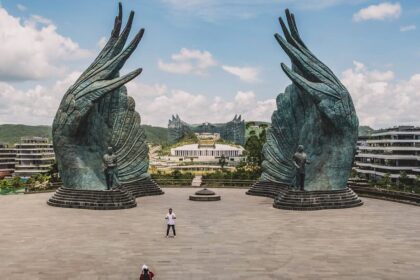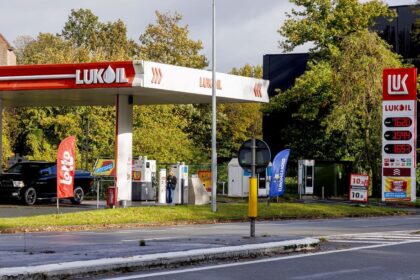Nickel Mining in North Maluku: A Double-Edged Sword
North Maluku, a remote province in eastern Indonesia, has become a global epicenter for nickel mining and processing. As the world’s demand for electric vehicles (EVs) and renewable energy storage surges, so too does the appetite for nickel—a critical component in lithium-ion batteries. Indonesia, now the world’s largest nickel producer, has positioned North Maluku at the heart of its industrial ambitions. Yet, beneath the promise of economic growth and green technology, a mounting crisis is unfolding for local communities, the environment, and public health.
- Nickel Mining in North Maluku: A Double-Edged Sword
- How Nickel Powers the Global Energy Transition
- Health Crisis in the Shadow of Nickel Smelters
- Pollution: Air, Water, and Soil
- Environmental Degradation: Deforestation and Floods
- Social and Economic Impacts: Who Benefits?
- Economic and Health Costs: A Growing Burden
- Calls for Reform: Can Indonesia Balance Growth and Sustainability?
- In Summary
How Nickel Powers the Global Energy Transition
Nickel is essential for manufacturing batteries used in electric vehicles and renewable energy storage systems. As automakers and governments worldwide push for a transition away from fossil fuels, demand for nickel has soared. Indonesia supplies nearly half of the world’s nickel needs, with North Maluku among its four main mining hubs. The Indonesia Weda Bay Industrial Park (IWIP), a sprawling 5,000-hectare complex in Central Halmahera, is a flagship project in this drive, attracting billions in foreign investment and hosting smelters, mines, a seaport, and an airport.
However, the process of extracting and refining nickel is energy-intensive and environmentally taxing. Most Indonesian smelters, including those at IWIP, rely on coal-fired power plants, undermining the very climate goals that EVs are meant to support. According to the Centre for Research on Energy and Clean Air (CREA), Indonesia’s captive coal power capacity—plants built specifically to power industrial complexes—has grown rapidly, with North Maluku at the forefront.
Health Crisis in the Shadow of Nickel Smelters
For residents living near the IWIP and other nickel facilities, the costs are immediate and personal. Villages like Gemaf and Lelilef Sawai, once surrounded by lush forests and clean rivers, now sit in the shadow of smokestacks and coal storage yards. The air is thick with dust and ash, and the sky glows red at night from industrial emissions.
Stesya Tania, a young mother in Gemaf, describes a daily struggle to keep her home clean and her daughter healthy. Despite sweeping twice a day, ash infiltrates every corner, and her four-year-old daughter, Putri, suffers from chronic respiratory problems. Doctors have diagnosed her with asthma, a condition that has become increasingly common among local children.
Asjuati Tawinella, head of the Lelilef Health Center, explains:
“According to the data I have, respiratory infection cases increased every year, ranking first annually.”
Health data from the Lelilef Health Center paints a stark picture: acute respiratory infections have surged from 351 cases in 2018 to over 2,700 in 2024. In Lelilef Sawai alone, cases jumped from 434 in 2020 to more than 10,000 in 2023. The percentage of sick residents in North and Central Weda districts—43.4% and 20.7% respectively—far exceeds provincial and national averages.
Children and the elderly are especially vulnerable. Many families, like Stesya’s, spend a significant portion of their income on clinic visits and medication. For some, the only recourse is to keep children indoors, limiting their exposure to the polluted air.
Pollution: Air, Water, and Soil
The health crisis is driven by multiple forms of pollution. Coal-fired power plants emit fine particulate matter (PM10 and PM2.5), sulfur dioxide (SO2), and nitrogen oxides (NOx)—all known to cause respiratory and cardiovascular diseases. Studies by the Association of People’s Emancipation and Ecological Action (AEER) and CREA have found that particulate levels near IWIP regularly exceed both Indonesian and European safety standards.
But the problem extends beyond the air. Research by the Nexus3 Foundation and Tadulako University in 2024 found that blood samples from workers and residents in Gemaf and Lelilef contained mercury and arsenic at levels far above safe thresholds. These heavy metals, released during mining and smelting, can cause neurological damage, cancer, and developmental disorders in children.
Annisa Maharani, a Nexus3 Foundation researcher, reports:
“Out of 61 blood samples, 23 showed mercury and arsenic levels exceeding the safe threshold. Nine residents had both contaminants at the same time.”
Water sources have also been contaminated. Rivers once used for drinking, bathing, and fishing now run brown with sediment and industrial runoff. In some areas, such as the village of Kawasi on Obi Island, internal company documents revealed by investigative journalists show levels of hexavalent chromium—a potent carcinogen—up to 19 times the legal limit in local springs. Residents, unable to afford bottled water, continue to drink from these polluted sources, risking long-term health effects.
Environmental Degradation: Deforestation and Floods
Nickel mining in North Maluku is inextricably linked to deforestation. To access shallow nickel deposits, companies clear vast tracts of tropical forest, destroying habitats and releasing greenhouse gases. Satellite imagery and research by Climate Rights International and the University of California, Berkeley, show that over 5,300 hectares of forest have been lost to mining on Halmahera alone.
This deforestation has cascading effects. Without tree cover, soil erosion increases, rivers silt up, and flooding becomes more frequent and severe. Between 2020 and 2024, floods over one meter high struck the Weda Bay mining area more than a dozen times, displacing thousands of residents. Agricultural land and plantations have been damaged or destroyed, undermining food security and livelihoods.
Marine ecosystems are also suffering. Hot water and waste discharged from smelters have killed fish and polluted coastal waters, forcing fishers to travel farther for dwindling catches. Heavy metals such as nickel, chromium, and copper have been detected in water and fish samples at levels above government safety thresholds, raising concerns about food safety and the long-term viability of local fisheries.
Social and Economic Impacts: Who Benefits?
Despite the billions invested and the rapid economic growth reported in North Maluku—over 23% in the second quarter of 2023—poverty and inequality persist. Central Halmahera, home to IWIP, has one of the highest poverty rates in the province. Many locals, especially those without specialized skills, have not benefited from the mining boom. Instead, they have lost traditional livelihoods in farming and fishing, and now face higher living costs due to environmental degradation.
Land acquisition for mining has been fraught with controversy. Indigenous communities, such as the Sawai and the O’Hongana Manyawa (Tobelo Dalam), have seen their ancestral forests and hunting grounds cleared without proper compensation or consent. Reports by Climate Rights International and other NGOs document cases of land grabbing, intimidation, and inadequate compensation. Some communities have been resettled in villages with poor infrastructure, struggling to adapt to new ways of life.
Maklon Lobe, an Indigenous Sawai farmer, recounts:
“My land was excavated without consent and I was pressured to sell at a low price. The company paid for only a portion and took the rest without compensating me.”
For the O’Hongana Manyawa, whose culture and survival are intimately tied to the forest, the loss is existential. As mining encroaches on their territory, their traditional way of life is threatened, and efforts to resettle them have largely failed.
Economic and Health Costs: A Growing Burden
The public health and economic costs of nickel industry pollution are staggering. Estimates by CELIOS and CREA project that, by 2025, the cost of treating pollution-related diseases in North Maluku will reach IDR 8.5 trillion (about USD 491 million), rising to IDR 12.3 trillion in the next decade. Without stronger environmental controls, the region could see 5,000 premature deaths and an additional IDR 54 trillion in economic burden by 2030.
Nationally, if Indonesia continues to expand captive coal power for industry without retiring old plants or enforcing stricter standards, the cumulative health impacts could result in 27,000 additional deaths and IDR 330 trillion (USD 20 billion) in economic losses by 2040.
Calls for Reform: Can Indonesia Balance Growth and Sustainability?
As the crisis deepens, local leaders, health officials, and civil society groups are demanding urgent action. Recommendations from researchers and advocacy organizations include:
- Halting new permits for nickel smelters and captive coal power plants until environmental governance improves
- Revising regulations to phase out coal and incentivize renewable energy in industrial complexes
- Enforcing stricter emission and pollution controls, with regular air and water quality monitoring
- Providing fair compensation and meaningful consultation for affected communities, especially Indigenous peoples
- Investing in healthcare infrastructure and access for pollution-affected areas
- Restoring degraded environments through reforestation and remediation
There is also growing pressure on global automakers and battery manufacturers to ensure that their supply chains do not contribute to environmental destruction or human rights abuses. Some, like Tesla, have pledged to avoid sourcing nickel from areas inhabited by uncontacted Indigenous peoples, but implementation remains limited.
Timotius Rafael, AEER researcher, urges:
“Decarbonization must be done by stopping coal power plants and switching to renewable energy, so the damage in North Maluku won’t get worse.”
In Summary
- North Maluku’s nickel industry is central to Indonesia’s economic growth and the global EV supply chain, but it comes at a high cost to local communities and the environment.
- Air and water pollution from coal-fired power plants and smelters has caused a surge in respiratory illnesses, heavy metal contamination, and other health problems.
- Deforestation, flooding, and loss of traditional livelihoods have undermined food security and increased poverty and inequality.
- Indigenous communities face existential threats from land grabbing and environmental degradation.
- Public health and economic costs are projected to rise sharply without urgent reforms and a shift toward cleaner, more sustainable industrial practices.
- Experts and advocates call for stricter regulations, a transition to renewable energy, fair compensation, and greater corporate accountability to protect both people and the planet.












